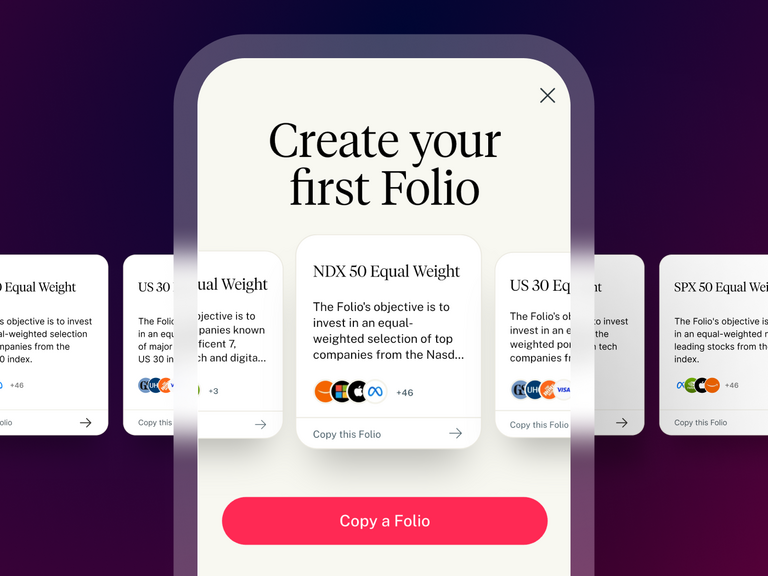Chris Burniske, a next-generation internet analyst, investor and founder of Placeholder, talks to Opto about spearheading ARK Invest’s crypto strategy, his investment thesis and how he is furthering the public infrastructure of tomorrow.
Seen as building the foundations of a radically different technological future, blockchain companies and crypto-protocols are attracting some of the biggest returns and investments. Venture capitalists are betting billions of dollars to build a decentralised global economy through what’s been coined the third generation of the internet — Web 3.0. Pitchbook data shows that a record $28.1bn was poured into the industry over 1,526 deals in the year to 30 November 2021.
Investing alongside top money managers is venture capital firm Placeholder, founded by pioneering crypto analysts Chris Burniske and Joel Monegro. The firm, which holds positions in 35 protocols and businesses, such as Balancer, Polkadot and zkSync, aims to better distribute data, wealth and power.
But Burniske wasn’t always in the business of investing. In 2013, he was studying Earth systems at Stanford University when he first met Cathie Wood, the then CIO of AllianceBernstein. Wood asked him to join an investment research startup she was working on, with the idea of actively managing exchange-traded funds (ETFs) based on disruptive innovation. He turned the offer down — finance was the last place he saw himself.
A year later, Burniske had changed his mind. He realised that funds raised from the prediction business could be used to kickstart an environmental movement that was in the doldrums. He joined the nascent company — ARK Invest — where he began investigating converging technologies, such as cloud computing, big data, Internet of Things (IoT) and blockchain technology, before eventually concentrating his efforts on the cryptocurrency market.
An early awareness of the Silk Road, a marketplace powered by bitcoin, taught Burniske the importance of crypto applications early on. He also knew from his work at Stanford that machine learning was the next logical step to maximise the benefits of big data — he expects the convergence of these two technologies to revolutionise business models.
His interest in the crypto market was further piqued when he realised how dismissive Wall Street was of bitcoin in its early days. Burniske went on to become a pioneering analyst of ARK Invest’s next-generation internet strategy and is considered by many as one of the most trusted authorities on crypto.
Here, Burniske tells Opto how he spearheaded ARK Invest’s crypto strategy, explains his investment thesis at Placeholder and why he thinks Web 3.0 is the next big thing in blockchain.
Up until late 2014, ARK’s portfolio had companies such as Taiwan Semiconductor or Nvidia as partial crypto plays. But we didn’t have a pure crypto play until Grayscale approached us about their Bitcoin Trust [GBTC], which wasn’t liquid at the time we started talking. For the first three quarters of 2015, I did deep work on bitcoin, looking at the long-term security model of the network to make sure it was sustainable. I also worked on a separate white paper [Bitcoin: A Disruptive Currency] investigating bitcoin as a currency with economist Arthur Laffer.
In September 2015, ARK added GBTC, which was at that point in time liquid, to the ARK Next Generation Internet ETF. We then got press as the first public fund manager to offer bitcoin exposure. Some people called it a publicity stunt. But then, in November 2015, bitcoin quickly doubled from $200 to $400. People started coming to ARK and me as the only buy-side analyst covering bitcoin. It was a case of being in the right place at the right time. I later met Joel Monegro in 2016, who was on the private side of the crypto markets at Union Square Ventures (USV).
By the time 2017 rolls around, bitcoin is breaking through $1,000 for the second time, and Ethereum is starting to gain momentum as a developer platform. Joel and I were so deep down the crypto rabbit hole that we were losing interest in equities, so we started talking with our mentors. For me, that was Cathie, and for Joel, that was Brad Burnham, one of the co-founders of USV. They were open to us setting up a crypto-focused venture shop, so Cathie, Brad and Brett [Winton, director of research at Ark Invest] seeded us with a small investment to get Placeholder off the ground.
I left ARK in the middle of 2017, right as it was inflecting. That wasn’t easy because I could see I was jumping off a rocket ship that I had helped partially assemble. Furthermore, several of the areas I’d been following for the firm were inflecting, in particular machine learning.
Machine learning and artificial intelligence (AI) is at the margin and driving the most amount of change in the Web 2.0 world. Cloud computing and IoT are still important trends that are largely enabling machine learning. The more machine learning can predict the future with accuracy, the more machines of all different kinds will aid our lives. Machine learning and AI is the area that’s juiciest for investment returns in Web 2.0 and will ultimately overlap with Web 3.0.
I left ARK to assemble, hopefully, another rocket ship in an area full of asteroids. I really didn’t have a choice, though. I was so obsessed with what was going on with crypto. Since 2018, we’ve been investing in Web 3.0.
Our entire investment thesis at Placeholder rests on the understanding that blockchains are open data structures that commoditise the golden goose of Web 2.0. To give context, I must go back into the history of information technology because it’s open architectures that always unlock incumbent market powers and unleash new waves of innovation. If you go back in time to the hardware era, computing was just becoming a thing. That era consolidated around IBM, which dominated throughout the 50s and 60s. But what started to undo IBM’s market power was the microprocessor, which came about in 1971.
“Our entire investment thesis at Placeholder rests on the understanding that blockchains are open data structures that commoditise the golden goose of Web 2.0.” – Chris Burniske
The microprocessor was a standard hardware unit that the world could coordinate around. This led to a massive proliferation of hardware builders that started to collapse costs, which then opened the realm for software providers to come in and build towards an open standard. As the software era arose, it consolidated around Microsoft’s proprietary software. But Microsoft’s market power was again undone by an open standard, which was partly TCP/IP (transmission control protocol/internet protocol), disseminating information in an open-access way, and the open-source software movement.
As software began to get commoditised, the next area of value creation was around data. This is where we currently are with Netflix [NFLX], Amazon [AMZN], Google [GOOGL] and Facebook [FB]. All these companies are built on the foundations of open hardware and software, but they rely on proprietary data. The scale of their data assets is so large that any startup gets crushed by them. The only way to undo their market power is through an open standard around data.
That’s exactly what blockchains are — they’re powerful because they allow the world to reliably share, update and coordinate around a ledger of arbitrary data. Bitcoin started it with a ledger of monetary data. Ethereum has expanded it with a ledger of business and legal logic. Now, increasing experimentation is occurring with what types of data a blockchain can hold. There are privacy concerns and things that need working out. But what is clear is that this is the open standard that will unlock the market power of the current Web 2.0 incumbents.
Placeholder is focused on better distributing data, wealth and power. We’re always looking for protocols that further that cause. For example, Ethereum can be seen as a massive, distributed community-owned AWS (Amazon Web Services), or Google Compute that enforces legal and business computation. Developers upload their contract logic, but from there consumers can pay to access that service on an ad hoc basis. What they’re paying for is a hypercompetitive market of miners to execute the business logic the consumer desires. There is very little margin for profit, and so the consumer wins. Currently, Ethereum has some high costs as the tech matures, but the structure is set up in a way that hardcore global competition should drive those costs and margins down to utility company levels.
That is a much more transparent egalitarian technology architecture, which ultimately benefits the consumer. Often with these types of innovations, the first sector to adopt is the financial sector because they see how the margins of exchange are compressed. This has also played out within crypto, where decentralised finance, or DeFi, has been the area where meaningful innovation that impacts consumers has gotten off the ground the quickest. It’s not that I think Goldman Sachs or JPMorgan are disappearing next year or even this decade. But at the margin, the growth rates of crypto are so fast that traditional financial institutions are already feeling the hit on their growth.
“Our entire investment thesis at Placeholder rests on the understanding that blockchains are open data structures that commoditise the golden goose of Web 2.0.” – Chris Burniske
We have several investments in DeFi. What Balancer [a Placeholder portfolio company] does, for example, is instead of paying an asset manager to manage your assets in an index fund, you get paid for contributing your assets to an index fund in yield. What ends up happening when you contribute your funds to Balancer’s pools is that those pools are used to power a decentralised exchange, and, as people pay fees to use that exchange, those fees are then funnelled to the asset holders. It’s like you took BlackRock [BLK] and the Nasdaq, stripped out the profit centres of both, mashed them together and passed the fees that traders paid to the asset holders.
Numerai is another example, which you can think of as the world’s largest quant hedge fund by the number of data scientists. It releases encrypted datasets that hundreds and sometimes thousands of data scientists then use to research and submit predictive models. Numerai takes those models and creates a meta-model to then manage assets. It then pays out the data scientists based on how correct and differentiated they were. Here you’re starting to see the separation of capital from insight. It’s the most extreme and distributed version of quant investment management.
Web 3.0 is currently in its infancy, and it’s going to take years for it to develop into maturity. But Web 3.0 is going to be the next generation’s native digital prime experience. It’s where the techno financial and social coordination structures are digitally native, which is clearly where the world is headed. That means they’re global by nature, permissionless and easy to opt in and out of. That’s very different from the permissioned, nation state-centric extractive worlds that we currently exist in.
Disclaimer Past performance is not a reliable indicator of future results.
CMC Markets is an execution-only service provider. The material (whether or not it states any opinions) is for general information purposes only, and does not take into account your personal circumstances or objectives. Nothing in this material is (or should be considered to be) financial, investment or other advice on which reliance should be placed. No opinion given in the material constitutes a recommendation by CMC Markets or the author that any particular investment, security, transaction or investment strategy is suitable for any specific person.
The material has not been prepared in accordance with legal requirements designed to promote the independence of investment research. Although we are not specifically prevented from dealing before providing this material, we do not seek to take advantage of the material prior to its dissemination.
CMC Markets does not endorse or offer opinion on the trading strategies used by the author. Their trading strategies do not guarantee any return and CMC Markets shall not be held responsible for any loss that you may incur, either directly or indirectly, arising from any investment based on any information contained herein.
*Tax treatment depends on individual circumstances and can change or may differ in a jurisdiction other than the UK.
Continue reading for FREE
- Includes free newsletter updates, unsubscribe anytime. Privacy policy






